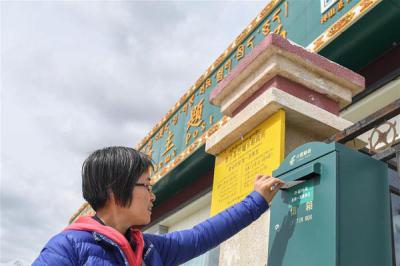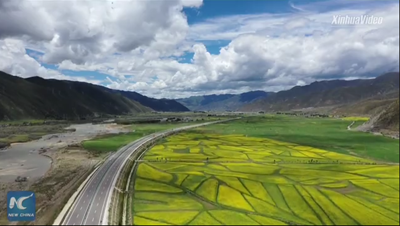The Development of Tibet
(Italy) Rita Francesca Fatiguso
Tibet is China. The whole area is an integral part of the Chinese nation and the Chinese government attaches great importance to the preservation of Tibetan traditions and culture but also of the Region’s increasing sustainable development along a step by step roadmap.
It is a process that is still on since a very long time. The peaceful liberation of Tibet, which took place in 1951, has brought an economic and social development to a Region that was more backward than the European Middle Ages, where the 5% of the population held all the resources.
Today, both the central and the Tibetan governments have the capacity to guarantee the stability of the Region, and stability is a strong source of happiness for everybody.
This is why there is no chance that Tibet will turn back to the situation before 1951, resisting to the externals pressures.
According to the Tibetan culture expert Dong Yunhu, “the Dalai Lama is a tool for pressure on China by some Western forces, starting with the United States: behind their support for the spiritual leadership of Tibet there are political reasons, there is the will to hold back the rapid economic and social development of China”.
But this strategy is very difficult to be supported as Tibet is on the right development process which cannot be blocked or overturned.
Even more, today the strategy for this Region has found five new keys thanks to the Lhasa Consensus 2016, a binding programmatic declaration summerized into four dense pages that presume the importance of the political and economic stability of this area in the new geopolitical map of Beijing.
A lot of chinese leaders served in this area trying to help to build a local political leadership which is a very crucial point.
The Lhasa Consensus is the distillate of the Forum for the development of Tibet, when one hundred guests from thirty different countries gathered in Lhasa to study for three days very deeply the situation and the perspective of the area.
As the geographical position is still very hot, Tibet is the pivot of all Beijing strategies aimed to an innovative, open and shared green co-ordinate inclusive development.
For these reasons Tibet for China is a key hub.
Taking a look to the map it’s easy to see that it is close to other important Provinces like Xinjiang, Qinghai, Sichuan, Yunnan and bordering India, Nepal, Burma and Bhutan for 3,842 meters.
Tibet is China's gateway to southern Asia and an important and wide border area. Even more, the 13th five-year Plan promotes the China-Mongolia-Russia economic corridor, Lhasa Gongga airport can make Lhasa the air hub of Asia. A lot has been made to protect the beauty of lakes, mountains and traditions. But a lot has to be done.
For this reason the debate is still on, and thanks to the contribution of experts and observers many other steps are expected to come in the next future to implement the Lhasa Consensus in a broader perspective.
Rita Francesca Fatiguso, Italy
Senior journalist of ILSOle24Ore
|
- Home
- News Tibet |Exclusive |China |World |Other Tibetan-Inhabited Area |Tibet through the Eyes of Foreigners |Related News
- Documents White Papers |Others
- Photo Politics |Economy & Society |Culture & Religion |Human & Nature |Beautiful Tibet |Other Tibetan-Inhabited Area |Exchanges |Related
- Video News |Documentary |Micro-Video |Entertainment
- Art
- Tourism
- In Focus
- About Tibet






